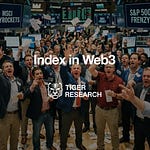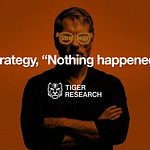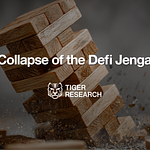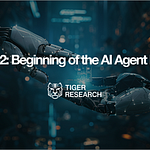This report was written by Tiger Research, analyzing InfoFi's attention economy model and its systemic implications.
TL;DR
InfoFi shows a structural attempt to quantify user attention and activities and link them to rewards.
However, problems from initial structures currently appear, including declining content quality and reward concentration around specific projects.
These represent design issues in evaluation criteria and reward distribution methods rather than limitations of the InfoFi model itself. They can be interpreted as challenges with potential for improvement.
1. The Era of Attention as Currency
Attention has become one of the most scarce resources in modern industry. Information overflows in the internet age, while human capacity to process this information remains limited. This scarcity drives numerous companies to compete intensively for user attention, and the ability to capture attention has emerged as a core competitive advantage.
The cryptocurrency industry shows this attention competition in more extreme forms. Mindshare plays a significant role in token pricing and liquidity formation. This becomes a critical factor that determines project success or failure. Even projects with superior technology often face market rejection when they fail to capture market attention.
This phenomenon stems from the structural characteristics of the cryptocurrency market. Users act not merely as consumers but also as investors. Their attention leads directly to token purchases, creating increased demand and network effects that attract more participants. Liquidity builds where attention concentrates, and narratives develop upon this liquidity foundation. These established narratives then attract new attention and create a virtuous cycle that drives market momentum.
2. InfoFi: A Systematic Attempt to Monetize Attention
The market clearly moves based on attention. However, this structure raises one key question: who actually benefits from the attention that gets created? Users generate attention through community activities and content creation, but these actions are hard to measure and don't have clear direct reward systems. Until now, people could only make indirect profits by buying and selling tokens. No reward structure existed for the actual contributions that create attention.
InfoFi represents one attempt to address these limitations. InfoFi combines Information and Finance to create a structure that evaluates user contributions based on the attention their content generates—such as views, comments, and shares—and links this to token rewards. This structure has spread since Kaito launched it.
Kaito measures social media activities like posting and commenting through AI algorithms. The platform gives token rewards based on scored data. The more attention user-generated content attracts, the more exposure and reach projects can gain. Capital sees this attention as a signal and uses it to make investment decisions. As attention grows, more capital flows into projects and participant rewards increase accordingly. Participants, projects, and capital work together through attention data as a medium. This creates a cycle where participation and rewards feed into each other continuously.
The significance of the InfoFi model appears in three key areas.
First, it quantifies user contribution activities that previously had unclear evaluation standards. Score-based systems let people define contributions structurally and help users predict what rewards they can earn from specific actions. This boosts the sustainability and consistency of user participation.
Second, InfoFi turns attention from an abstract concept into measurable and tradable data. This changes user participation from simple consumption to productive activity. Most existing online participation involved consuming or sharing content, while platforms made money from the attention these activities generated. InfoFi measures reactions to attention-generating content and gives out rewards based on this data. This makes people see participant actions as productive work. This shift gives users roles as network value creators rather than just community members.
Third, InfoFi lowers the barriers to information production. Before, major influencers and expert accounts dominated information distribution and took most of the attention and rewards. InfoFi-based structures assess contributions through measurable evaluation of content reactions. Regular users can earn real rewards when they get reactions above certain levels. This spreads out information distribution structures and creates more opportunities for users from different backgrounds to participate. This makes it clearly different from existing structures.
3. The Attention Economy Trap Triggered by InfoFi
The InfoFi model clearly serves as a starting point for new reward design experiments within the cryptocurrency industry. It quantifies user contributions and links them to rewards. However, attention has become an overly central value. Side effects are gradually emerging as a result.
The first problem is excessive attention competition and declining content quality. Attention has become the standard for rewards. Content purpose now shifts from providing information or encouraging meaningful participation to simply "standing out." Generative AI technology has made content creation much easier. Mass-produced content without real information or insights spreads rapidly. These so-called "AI Slop" contents are spreading throughout the ecosystem. This raises major concerns.
The Loud project clearly shows this trend. Loud experimented with tokenizing attention itself. The platform chose to distribute rewards to top users who received the most attention over certain periods. The structure was experimentally interesting, but attention became the sole criterion for rewards. This led to overheated competition among users. It also caused mass production of repetitive and low-quality content. This built up content fatigue throughout the community.
The second problem is content centralization. Attention-based rewards begin focusing on specific projects or topics. Other content gets effectively excluded as a result. Kaito's mindshare data shows this clearly. Loud once took over 70% of crypto content on Twitter. It practically dominated information flow within the ecosystem. When rewards focus on attention, content diversity shrinks. Information gets reorganized around projects that offer large token rewards. Eventually, marketing budget size determines influence within the ecosystem. This matters more than technical capabilities or actual performance.
4. Structural Limitations of InfoFi: Evaluation and Distribution
4.1. Limitations of Simplified Content Evaluation Methods
The problems with attention-centered structures lead to a fundamental question. How should content be evaluated and rewards distributed? Most current InfoFi platforms judge content value based on simple reaction metrics like views, likes, and comments. This structure assumes that "high engagement equals good content."
Content with high engagement may indeed have better information quality or delivery. However, this mainly applies to top-tier content. For most mid-to-lower tier content, the relationship between reaction numbers and quality remains unclear. This creates a structure where repetitive formats and overly positive content get high ratings. Meanwhile, content that presents diverse perspectives or addresses new topics struggles to get proper recognition.
Solving these problems requires a more sophisticated system for judging content quality. Simple engagement-based evaluation works with fixed standards. However, content value can change depending on the times or circumstances. For example, AI technology could identify meaningful content. Community-based algorithm adjustment methods could also be introduced. The latter could use a structure where algorithms adjust evaluation criteria based on user reaction data to sample content provided periodically. This approach would help evaluation systems respond flexibly to changes.
4.2. Reward Structure Concentration and the Need for Balance
Content evaluation limitations exist alongside reward structure problems. Reward structures also make information flow bias worse. Current InfoFi ecosystems typically have each project run separate leaderboards. They give rewards with their own tokens. In this structure, projects with big marketing budgets can attract more content. User attention tends to focus on specific projects.
These problems need adjustment mechanisms in reward distribution structures. Each project could keep its own rewards as before. Platforms could monitor content concentration in real-time. They could use platform tokens to adjust this. For example, content might become overly concentrated on specific projects. Platform token rewards could be temporarily cut in these cases. Topics that get relatively little coverage could receive additional platform tokens. Content spanning multiple projects could also get extra rewards. This would reduce the problem of content flow tilting to one side. It would create an environment where diverse topics and perspectives get more coverage.
Evaluation and rewards form the core of InfoFi structures. How content gets evaluated determines the ecosystem's information flow. Who gets what kind of rewards also matters. The current structure combines evaluation systems that depend on single criteria with marketing-centered reward structures. This speeds up attention dominance. It also weakens information diversity. Flexibility in evaluation criteria matters for sustainable operations. Balance adjustment in distribution structures is also a key challenge for InfoFi ecosystems.
5. Closing Thoughts
InfoFi represents a structural experiment that tries to quantify attention and convert it into economic value. It quantifies user contributions and links them to rewards. This transforms existing one-way content consumption structures into producer-centered participation economies. The approach offers meaningful possibilities. However, current InfoFi ecosystems face structural side effects during the monetization of attention. These include declining content quality and biased information flow. These can be seen as growing pains from the initial design stage rather than model limitations.
Simple reaction-based evaluation shows its limits. Reward structures influenced by marketing resources also reveal problems. Improvements require systems that can properly evaluate content quality. Community-based algorithm adjustment mechanisms are also needed. Platform-level balance adjustment devices matter too. InfoFi aims to create ecosystems where members get fair rewards for participating in information production and distribution. Making this happen requires technical improvements. It also needs designs that encourage healthy community culture and responsible participation.
Attention works like currency in cryptocurrency ecosystems. InfoFi represents an important experiment in designing and operating new economic structures. It can realize its potential when it develops into structures where valuable information and insights get shared. This beats simple attention competition. The results of this experiment will serve as important milestones. They will help gauge the direction of information economies in the digital age.
🐯 More from Tiger Research
Read more reports related to this research.Disclaimer
This report has been prepared based on materials believed to be reliable. However, we do not expressly or impliedly warrant the accuracy, completeness, and suitability of the information. We disclaim any liability for any losses arising from the use of this report or its contents. The conclusions and recommendations in this report are based on information available at the time of preparation and are subject to change without notice. All projects, estimates, forecasts, objectives, opinions, and views expressed in this report are subject to change without notice and may differ from or be contrary to the opinions of others or other organizations.
This document is for informational purposes only and should not be considered legal, business, investment, or tax advice. Any references to securities or digital assets are for illustrative purposes only and do not constitute an investment recommendation or an offer to provide investment advisory services. This material is not directed at investors or potential investors.
Terms of Usage
Tiger Research allows the fair use of its reports. ‘Fair use’ is a principle that broadly permits the use of specific content for public interest purposes, as long as it doesn't harm the commercial value of the material. If the use aligns with the purpose of fair use, the reports can be utilized without prior permission. However, when citing Tiger Research's reports, it is mandatory to 1) clearly state 'Tiger Research' as the source, 2) include the Tiger Research logo. If the material is to be restructured and published, separate negotiations are required. Unauthorized use of the reports may result in legal action.













